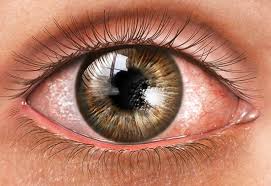maintain moisture in the eyes. Staying hydrated, wearing sunglasses to reduce tear evaporation, and maintaining eyelid hygiene are other simple yet powerful habits.
We also encourage patients to follow the “202020” rule: every 20 minutes, look at something 20 feet away for 20 seconds. This allows your eyes to reset and reduces strain.
Dispelling Common Myths
Like many medical conditions, Dry Eye Disease is surrounded by myths. A common misconception is that it only affects older adults, but screen-heavy lifestyles have made it increasingly common in younger people. Another is that watery eyes mean the eyes are too moist, when they may be dry and overcompensating. Not all eye drops are created equal, and using the wrong ones without guidance can make symptoms worse. Most importantly, dry eye is not something to ignore or live with, it is a real condition that deserves proper care.
When to See a Doctor
If you’re experiencing persistent eye discomfort, vision changes, or difficulty with daily activities due to your eyes, it’s time to seek a professional opinion. At our clinic, you’ll receive a comprehensive evaluation and a treatment plan built around your lifestyle, medical history, and individual needs. Dry Eye Disease is highly manageable with timely intervention, and you don’t need to suffer in silence.
Final Word: Prioritize Your Eye Health
Your eyes work hard every day at work, at home, and on the move. When they feel dry, tired, or irritated, it’s your body’s way of asking for help. At Dr. Pooja Khetarpal’s Eye Clinic, we believe that no one should have to live with chronic eye discomfort. We’re here to provide not just treatment, but lasting relief through a patient-first approach.
If you’ve been wondering whether what you’re feeling is “just tired eyes” or something more, don’t wait. Book a consultation today and take the first step toward clarity, comfort, and healthier vision.



